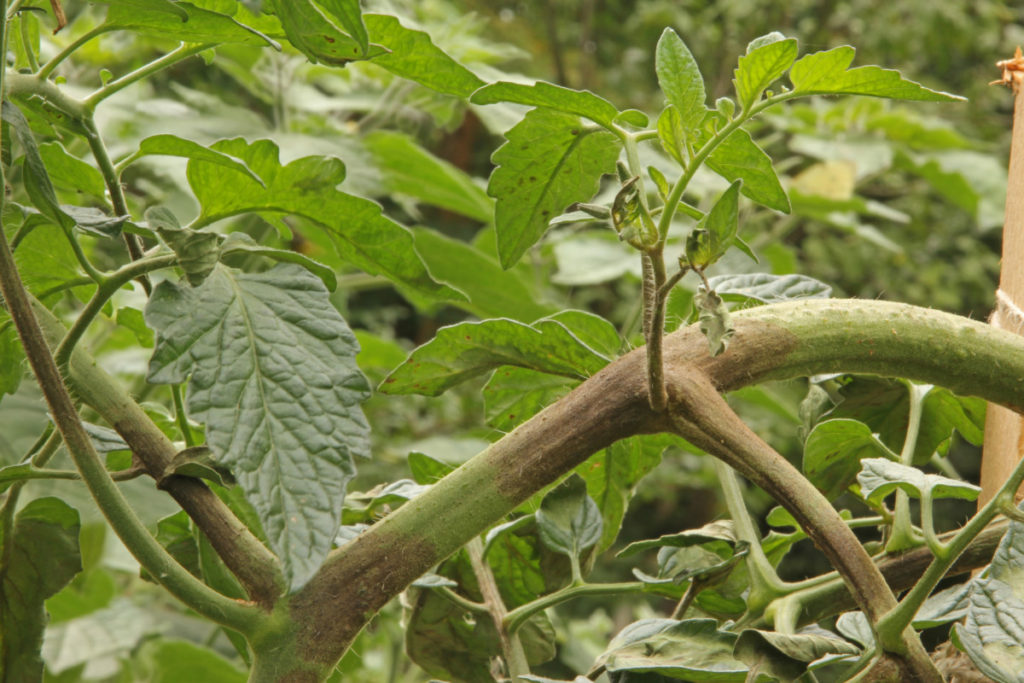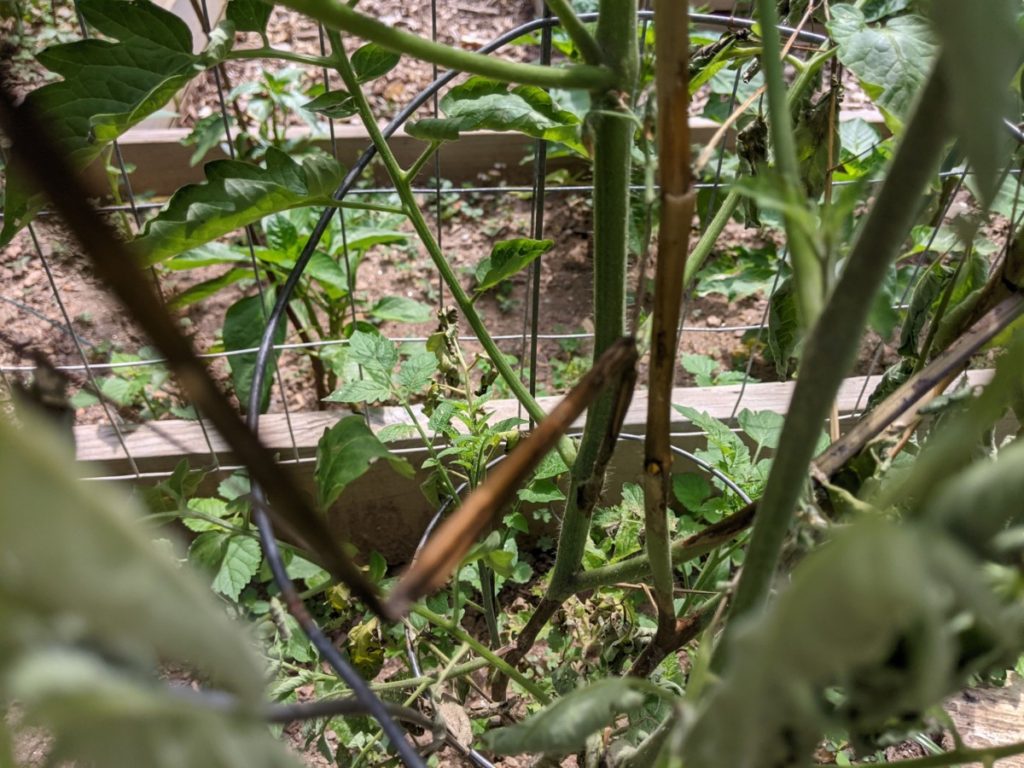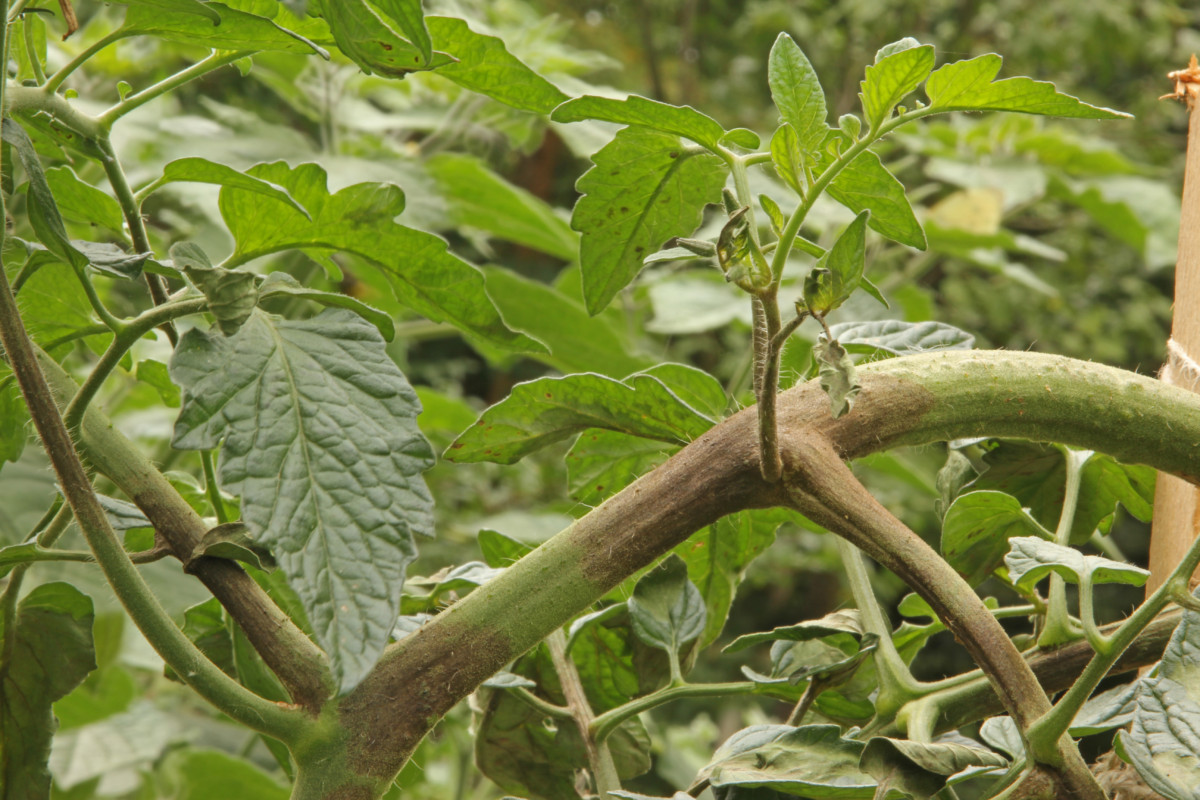Growing fresh vegetables in your own backyard is a great way to ensure fresh, healthy, toxin-free produce for you and your family. Most gardeners spend long hours deciding what to grow and how to provide the best growing conditions for their plants to thrive. An abundance of healthy, big fruit is the goal at the end of the day!
Tomato plant stems turn brown because of diseases caused by stem rot, blight, wilt, and bacterial canker. To prevent the risk of these diseases attacking your tomato plants, prepare the soil before planting, don’t overcrowd the plants, and remove diseased plants before the infection spreads.
Unfortunately, tomato plants can become diseased or just not grow as we expect them to. No matter how much care and attention you give to your tomato plants, sometimes they don’t thrive. Providing the best growing conditions for your tomato plants and knowing how to treat diseases will produce a great crop of healthy fruit.
Severe diseases like brown tomato stems can cause significant damage to your tomato plants, so great care should be taken to prevent this affliction before it begins. Follow our tips on how to avoid tomato stems turning brown.

What Causes Tomato Plant Stems To Turn Brown?
Tomato plants are prolific growers and will produce an abundant crop every time if the growing conditions are right. Unfortunately, they can be attacked by a range of diseases, causing unsightly and possibly devastating problems for the plant.
The first step in resolving diseases in tomato plants is to identify the culprit. We have listed a few of the common stem diseases which could affect your prized tomato plants.
Didymella Stem Rot
Didymella Lycopersici is caused by a fungus that attacks the stems of tomato plants causing brown, rotting patches. The stem can be attacked at any height but is most often infected at the stem base.
This fungus can survive in soil and is transported through water and wind onto nearby healthy plants. Mature plants are more susceptible to this fungus. To prevent infecting any other plants, the infected plant should be removed immediately.
Tomato Blight
Blight attacks mature leaves first and then spreads to the rest of the plant. The early signs of blight are dark spots on the lower leaves that will eventually die and drop. The infection presents as dark rings on the stem, which move up the plant from the base.
The tomato plant does not die, but the fruit can become exposed to sunscald without the protection of the leaves. Remove the diseased tomato plant at the end of the growing season.
Verticillium Wilt
Verticillium dahliae is another soil-borne fungus, generally occurring late in the growing season as the soil cools down. It is easy to identify as it begins with yellowing and wilting of the lower leaves on the plant and spreads to brown or black streaks on the stem.
The infection is limited to the lower 12 inches (30cm) of each stem. The fruit will be underdeveloped and small, but it will still be edible.
There is no known cure for Verticillium wilt, so the entire plant, including the roots, should be removed and destroyed. Treat the soil to prevent the fungus from spreading to the new season’s crop.
Bacterial Canker
Bacterial canker appears as a brown leaf with a yellow border. The canker spreads to the leaf tissue causing the leaves to wilt and discoloring the stems. This infection only affects one side of the plant, but it is a highly infectious disease and will cause the plant to die. There is no known cure for this unsightly disease, so all the infected plants should be removed from the garden immediately and destroyed.
The soil must be treated before any more plants are planted in that space.

How Do You Get Rid Of Brown Spots On Tomato Plants?
If the disease that is attacking the tomato plant is not dealt with quickly, the entire plant or even the entire tomato harvest can be lost.
Prevention is always a better practice than cure, so by providing your tomato plants with the best growing conditions and a little bit of TLC, they should keep growing and thriving well into the season and perhaps beyond if they are growing in greenhouse conditions.
Mature tomato plants do require additional nitrogen and phosphorous in the soil to help them withstand fungal attacks. Chemical and natural treatments in conjunction with preventative measures will ensure good healthy growing plants.
Organic Control
Keep weeds under control as some weeds can be hosts to the diseases even they do not show any signs of infection. Tomatoes are heavy feeders and do need fertilizers during the growing season.
Ammonium-based (nitrogenous) fertilizers could help plants recover, but there is no guarantee against further infections. Choose a fertilizer with a 3-2-1 ratio of phosphorus and nitrogen.
Apply the fertilizer to the roots once or twice during the growing season. Water after each application to allow the fertilizer to sink into the soil.
Bicarbonate fungicides are also an effective treatment to control fungus. Mix a solution of 1 teaspoon of bicarb dissolved into 1 quart of warm water and lightly spray over the leaves and stems of each plant.
Chemical Control
Synthetic insecticidal sprays like chlorothalonil are helpful to prevent fungal infections in tomato plants. Fungicides do not, however, cure fungal diseases; they only prevent them from spreading. Implementing prevention techniques will help to control fungal infections.
Copper-based fungicides can be used to control fungal and bacterial diseases. Copper sulfate is safe to be used with organic gardening.
Top Tips On How To Keep Tomato Plants Healthy And Prevent Diseases
Growing healthy plants is easy with some planning and a lot of hard work! By creating the best environment for your plants, they will produce a great crop. Before you plant any tomato plant, whether in the ground or a container, read through our top tips on keeping tomato plants healthy and disease-free.
- Purchase disease-resistant plant varieties
- Always disinfect gardening tools and stakes before use with a solution of nine parts water to one part bleach
- Practice plant rotation techniques every year
- Never plant in the cold ground – cold soil weakens plants leaving them susceptible to disease
- Do not overcrowd tomato plants. They need good air circulation to keep foliage dry and to prevent diseases
- Plant tomato plants in well-drained soil
- Water the tomato plants in the morning and avoid overhead irrigation systems
- Remove lower branches from plants to encourage better growth
- Remove diseased and infected leaves and plants immediately
- Cut back the plants infected with blight and wilt at the end of the growing season, and do not compost the soil until you are ready for the new season
- To support tomatoes, only use reed canes or Eucalyptus stakes. These could help to reduce disease
Conclusion
Checking your plants regularly, practicing crop rotation, and removing infected plants before the infection spreads to other plants should help in producing wonderful, healthy fruit.
By planting under the right conditions and preparing the soil beforehand, you will eliminate any disease-causing factors. Using organic fertilizers and spraying insecticides and fungicides regularly will help to keep the tomato plants disease-free.

